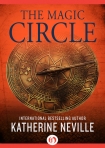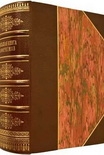The Magic Circle, Katherine Neville [parable of the sower read online .TXT] 📗

- Author: Katherine Neville
Book online «The Magic Circle, Katherine Neville [parable of the sower read online .TXT] 📗». Author Katherine Neville
It began with the same struggle Volga Dragonoff had alluded to only last night, a contest waged for the past two millennia which still seemed to be under way today. The part of the world involved—once again, Central Asia—had lost little of its mystery in the process. The British, along with the Russians and others, had engaged in this tug-of-war for the past five hundred years, and coined a name for it. They called it the Great Game.
THE GREAT GAME
Throughout the history of human knowledge, there have been two conceptions concerning the law of development of the universe, the metaphysical [idealist] conception and the dialectical [materialist], which form two opposing world outlooks. [In dialectical materialism] the fundamental cause of the development of a thing is not external but internal, it lies in the contradictoriness within the thing itself
.
—Mao Tse-tung
East is East and West is West and never the twain shall meet
.
—Rudyard Kipling
The East will help us to conquer the West
.
—Vladimir Ilyich Ulyanov (Lenin)
Ivan III of Russia, a descendant of Alexander Nevsky, shook things up for the first time in a quarter millennium when he refused, in the year 1480, to pay tribute to the Golden Horde. Ivan married Zoe, the only niece of the last Christian Byzantine emperor. When Constantinople fell to the Turks, he arrogated to himself the spiritual crown of head of the Eastern church and Defender of the Faith.
This politically astute wedding of church and state took place at what would be an important historical moment for western Europe: the year 1492, when “Columbus sailed the ocean blue” and Ferdinand and Isabella evicted the Moors and Jews from Spain, severing the seven-hundred-year infusion of southern and eastern cultures and pointing the face of Europe to the west. It marked the beginning of the end for the feudal system and lit the fuse of nationalism, with the subsequent rush for colonial expansion that that would entail.
An island to the north was rather late at jumping into this land-grabbing game. The East India Company was officially chartered by Queen Elizabeth I of England only on December 31, 1600. It was established to compete with the Dutch who, themselves already in competition with the Spanish and Portuguese, had still managed to corner a virtual monopoly on the spice trade in Malaysia and the Spice Islands. Within fifty years, chartered East India trading companies had also blossomed in Denmark, France, Sweden, and Scotland. The “jewel in the crown” of England was India with her vast troves of wealth, seemingly inexhaustible natural resources, and warm-water ports.
But the Russians by now had noticed these attributes, too.
Until the many reforms of Peter the Great in the eighteenth century, the Russian peoples themselves had appeared more Asiatic than European, with their long flowing robes, uncut hair and beards, sequestered women, and exotic church rites. Yet with their paranoiac fear of being surrounded again as they had been during the “lost centuries” of Mongol domination, these formerly backward feudal fiefdoms managed to expand their borders at the truly impressive rate of 20,000 square miles per year. In the two centuries from Peter’s death in 1725, they absorbed nearly all the vastly diverse cultures in a several thousand-mile swath surrounding them, pushing to the east through Siberia all the way to the Bering Sea, and to the west grabbing all or sizeable portions of Lithuania, Poland, Finland, Latvia, Estonia, Livonia, Karelia, Lapland.
A panicky Britain extended its influence north and eastward into the Punjab and Kashmir, annexing Burma, Nepal, Bhutan, Sikkim, and Baluchistan, and making serious runs on Afghanistan and Tibet. Egypt and Cyprus were occupied, the East India Company was dissolved, and Victoria, crowned Empress of India, had an empire where the sun never set.
As a countermove, by the beginning of the First World War, Russia expanded south and west and seized possession of Ukraine, the Caucasus, Crimea, and western Turkestan—today Central Asia—right down to the Indian-Persian border. Now two empires that once had been separated by thousands of miles had borders, in some places, within only a few miles of each other.
Nor did Russian expansionism end with the Russian Revolution. When Lenin called for a world uprising of the masses against colonial oppressors, he focused specifically on India, encouraging the colonized to throw off the (British) yoke of imperial slavery. But the Bolsheviks themselves, it soon proved, had little intention of offering autonomy to the colonial possessions Russia had acquired throughout four centuries of imperialism. Those regions attempting to break away during the ensuing civil wars and peasant uprisings were quickly brought to heel.
When the USSR was created in 1922, it consisted of the republics of Byelorussia (White Russia), Transcaucasia (Georgia, Armenia, and Azerbaijan), Ukraine, and the Russian Federated Soviet Socialist Republic, which included just about everything else. Only later, when the principally Islamic former Turkestan requested to become a separate and independent republic, were artificial boundaries drawn dividing it into not one but five states based on “ethnic nationalities.” That decision was taken in 1924, the year Lenin died and Joseph Stalin succeeded him, to remain for the next thirty years the steel fist of the Communist Party.
Beginning in 1939, the USSR “pacified and absorbed” all or part of Poland, Czechoslovakia, Rumania, the Baltic states of Latvia and Lithuania and Estonia, and portions of Germany and Japan.
I hardly needed Yevgeny Molotov of the Leningrad Nuclear Physics Institute to fill me in on the rest of the picture. After World War II, the name of the game had changed but the players remained the same: now it was called the Cold War. The new toy possessed by all key players was a nuclear “device.” Diplomatic strategy was





Comments (0)